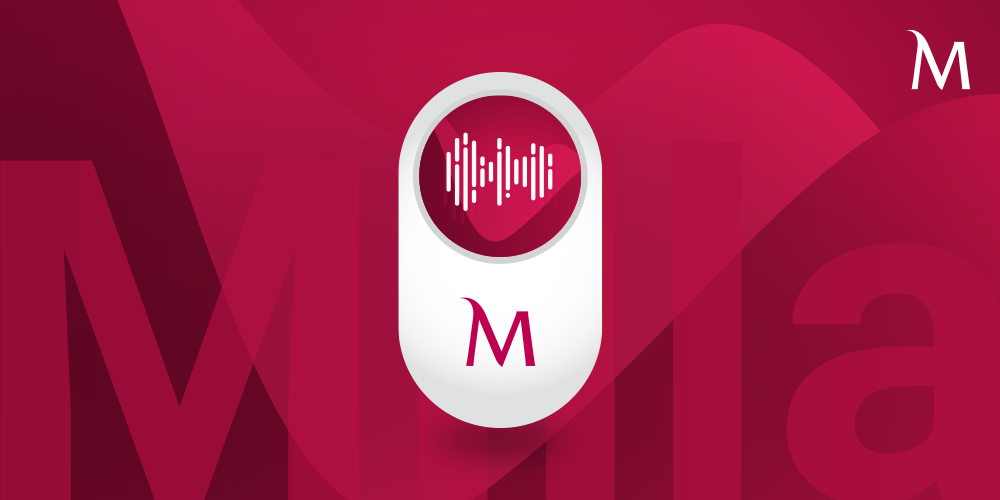14.12.2018
First bank chatbot in Poland to carry out transactions

Bank Millennium launches a chatbot, which will carry out transactions upon the customer’s request. Milla – the automatic assistant uses a voice and intention recognition technology to talk to the customer or communicate in writing. It will answer questions, will probe for details if necessary and … will get the job done.
– Bank Millennium is the first bank in Poland to offer customers a chatbot, which will not only answer questions but will also take an order and carry it out. The app user just needs to say “Send Ania 10 zloty” and Milla will understand this as an order to be carried out. In making the chatbot we used artificial intelligence, which has great potential in customer service. It allows filling the gap between the customer and the bank not only in terms of distance but also interaction. You can communicate with our chatbot in a way similar to that used in instant messengers. – Halina Karpińska, Director of Electronic Banking Department in Bank Millennium, said.
Chatbot is a computer programme, with which you can talk in natural language, like with a person. The talk may be in the form of text or voice. Chatbots use artificial intelligence to process language, which helps them understand speech and the user’s intentions.
– Such solutions hinge on permanent optimisation. Milla has already learned a lot but it keeps learning and will undoubtedly master more skills soon. In this way in the future it will be able to provide even better tailored services – Halina Karpińska added.
Milla - Bank Millennium’s chatbot, has been based on NLU (recognising intentions and parameters), ASR voice modules (converting speech to text, thanks to which you can talk to the chatbot) as well as TTS (text to speech conversion, thanks to which the chatbot can speak in reply). Milla will carry out transactions – initially transfers as well as top ups of prepaid cards and phones. It will show the history of transactions and upcoming payments if we ask for it. It will also say when the transfer will reach the recipient and what the bank’s data are. In the future it will make it easier for customers to find other information and to navigate the app.
– Today the most important interface for our customers is the mobile app, which we naturally keep developing. However the future of customer – bank contact is chatbots, robo-advisors and artificial intelligence. This is why we are working on these solutions already today. Are the Poles prepared for them? According to the #finanseprzyszlosci survey – not yet, but the level of trust in technology is changing over time. Today 60% of persons polled would definitely object to a virtual advisor; 10 years from now a definite “No” would come from only 35% people*. However irrespective of our declarations, we use bots increasingly often. Popularity of mobile messaging systems results in appearance of more and more chatbots integrated with them. There are over 100,000 in FB Messenger alone. This is a continuously developing global market, in which chatbots powered by artificial intelligence have a growing share. Last year this share was estimated at 250 million; today the forecast is that by 2024 it is to reach the value of USD 1.34bn ** – Jarosław Hermann, Member of the Management Board of Bank Millennium responsible for the IT area, said.
The development of chatbots was in fact inspired back in 1950 by Alan Turing, a British mathematician and cryptologist; one of the creators of information technology and considered by many to the father of artificial intelligence. Turing maintained that in the future machines will be intelligent and equal to man. In his studies on creating artificial intelligence he proposed a test of machine intelligence (the Turing test), which is used today to evaluate machines.
The first chatbot is considered to have been Eliza – an artificial psychotherapist designed in 1966 by Joseph Weizenbaum in Massachusetts. Many other bots have appeared since then – in 1972 PARRY simulating a man suffering from paranoid schizophrenia; in 1995 ALICE – open and tested by thousands of volunteers to-date; in 1997 Jabberwacky, which in 2005 and 2006 won a competition based on Turing’s test, or Eugene Goostman, considered by experts in 2014 to be human.
Chatbots began developing rapidly in recent years when their use begun in communication with customers in many sectors – including trade, media or finance. They started to develop towards personal assistants in mobile devices (Alexa from Amazon, Siri by Apple and Google Assistant), which answer customers’ questions in a specific context and carry out their orders. Bots have also appeared in such sectors as medical (e.g. a bot of the Endurance company, which chats with persons with Alzheimer’s), HR (bots used for recruitment) or in art (the Stańczyk chatbot created for the National Museum in Warsaw).
– Perhaps quite soon bots will themselves initiate user contact, thanks to which from simple helpers they will turn into intelligent proactive assistants – Jarosław Hermann added.
* Source: #finanse przyszłości survey
https://www.bankmillennium.pl/documents/10184/65476/Raport_finanseprzyszlosci.pdf
** Source: Global Market Insight report
https://www.gminsights.com/pressrelease/chatbot-market